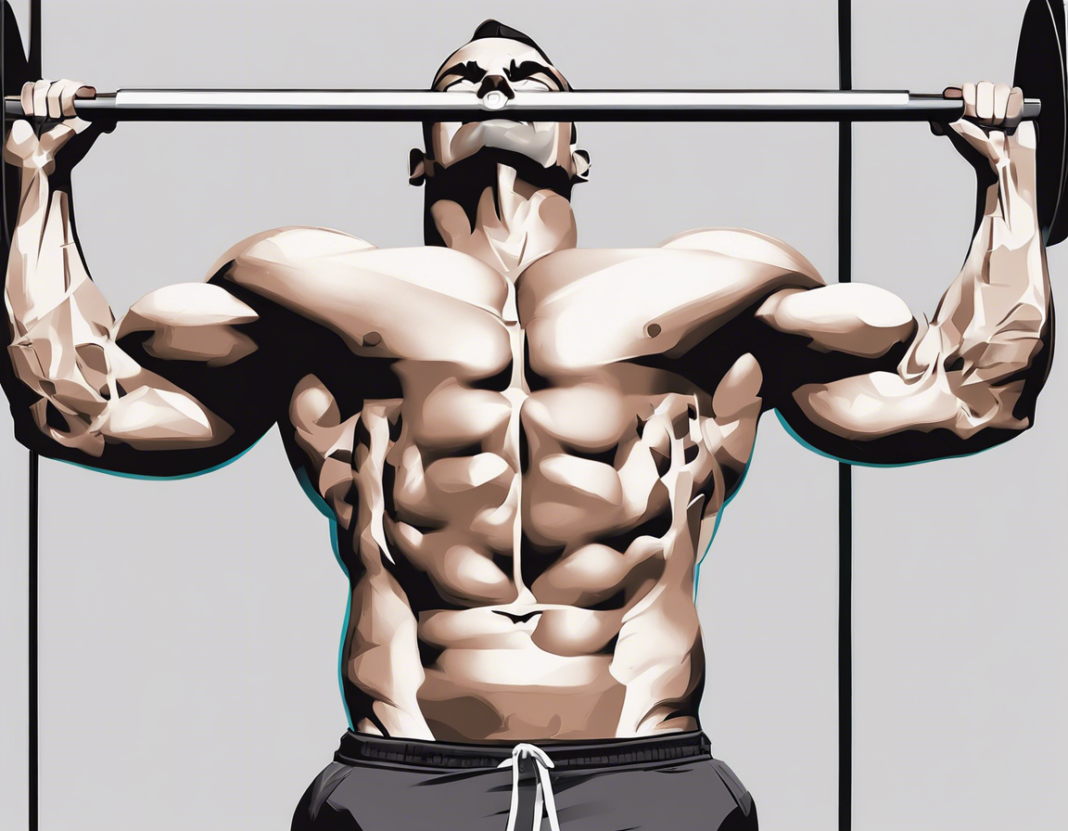The Bottom Line:
- Main theme: Ranking chest exercises for muscle growth
- Criteria for ranking: Stretch with high tension, feel good, simple progression
- Worst exercises: Hex press, plate press, dumbbell pullover
- Better exercises: Bench press, incline bench press, decline bench press
- Isolation exercises: Cable crossovers, seated PEC fly, pec deck machine
Best and Worst Chest Exercises for Muscle Growth
When it comes to building chest muscles, not all exercises are created equal. In this ranking of chest exercises for optimal muscle growth, we’ll explore the best and worst choices to help you sculpt a powerful chest.
Worst Chest Exercises
The hex press fails to provide a deep stretch or maximum tension on the pecs, earning it an F tier. Similarly, the plate press offers little overload potential and is awkward to execute, also landing in the F tier. Dumbbell pullovers, while theoretically activating the pecs, often fall short in providing a meaningful muscle connection, making them better suited as a lat exercise in the D tier.
Best Chest Exercises
The bench press, a classic favorite, offers high tension and overload potential, making it a solid choice for chest development. However, some individuals may struggle with shoulder issues, hence its placement in the A tier. The incline bench press provides similar benefits while emphasizing the upper pecs, making it a great addition to your routine in the A tier. The decline bench press, targeting the mid and lower pecs, earns a spot in the B tier due to limited range of motion and focus on specific muscle groups.
The flat dumbbell press allows for a deeper pec stretch and smooth resistance profile, earning it an S tier rating despite potential overloading challenges in advanced lifters. The machine chest press, offering deep pec stretch and stable movement, secures a top spot in the S tier. Dips, with their massive stretch and progressive overload options, are another excellent choice, sitting comfortably in the A tier.
For isolation exercises, the seated cable pec fly stands out for its stretch, tension, and stability, placing it in the S tier. Meanwhile, the pec deck machine provides similar benefits but lacks the freedom of movement found in cable variations, earning it an A tier ranking. Dumbbell flies, once considered less effective, now offer viable options for deep stretches and muscle activation, deserving a spot in the A tier.
Criteria for Ranking Chest Movements
When it comes to ranking chest movements for optimal muscle growth, certain criteria must be met to determine the effectiveness of each exercise. These criteria ensure that the exercises offer a deep stretch with high tension, feel good without causing pain, and have a simple progression for continuous muscle development.
Worst Chest Exercises
Starting with the worst chest exercises, the hex press fails to provide a significant stretch or tension on the pecs, earning it an F tier rating. Similarly, the plate press offers minimal overload potential and is awkward to perform, placing it in the F tier as well. Dumbbell pullovers, while activating the pecs theoretically, often lack the significant muscle connection required, making them more suitable as a lat exercise in the D tier.
Best Chest Exercises
On the other hand, the bench press, a classic favorite, offers high tension and overload potential, making it ideal for chest development. However, due to potential shoulder issues for some individuals, it is placed in the A tier. The incline bench press provides similar benefits while targeting the upper pecs, earning it a spot in the A tier as well. The decline bench press, focusing on the mid and lower pecs, is placed in the B tier due to its restricted range of motion and specific muscle group emphasis.
Moving on to isolation exercises, the seated cable pec fly stands out for its stretch, tension, and stability, securing a spot in the S tier. The pec deck machine, offering comparable benefits but lacking some freedom of movement, is rated in the A tier. Dumbbell flies, previously considered less effective, now provide valuable options for deep stretches and muscle activation, deserving a place in the A tier.
Ranking the Top Chest Exercises from Best to Worst
Ranking the Top Chest Exercises from Best to Worst
Let’s delve into the ranking of chest exercises for optimal muscle growth, exploring the best and worst choices to sculpt a powerful chest.
Worst Chest Exercises
Hex Press (F Tier): This exercise lacks the deep stretch and maximum tension on the pecs due to arms staying tucked in, leading to less effective pec targeting.
Plate Press (F Tier): Similar to the hex press but even more awkward and with limited overload potential, making it ineffective for chest development.
Dumbbell Pullovers (D Tier): While theoretically activating the pecs, many users report a lack of meaningful muscle connection, better suited as a lat exercise.
Best Chest Exercises
Bench Press (A Tier): Offers high tension and overload potential, though some may experience shoulder issues, making it a solid choice for chest development.
Incline Bench Press (A Tier): Provides similar benefits while emphasizing the upper pecs, making it a valuable addition to your routine.
Decline Bench Press (B Tier): Targets mid and lower pecs but has a restricted range of motion compared to other options.
Flat Dumbbell Press (S Tier): Allows for a deeper pec stretch and smooth resistance profile, earning it a top-tier rating despite potential overloading challenges.
Machine Chest Press (S Tier): Offers a deep pec stretch and stable movement, securing a top spot for chest development.
Dips (A Tier): With a massive stretch and progressive overload options, dips are an excellent choice for chest development.
Isolation Exercises Ranking
Seated Cable Pec Fly (S Tier): Stands out for its stretch, tension, and stability, making it a top choice for isolating the pecs.
Pec Deck Machine (A Tier): Provides similar benefits but lacks the freedom of movement found in cable variations.
Dumbbell Flies (A Tier): Once considered less effective, now offers viable options for deep stretches and muscle activation.
Cable Crossovers (A Tier): Provide a big stretch on the pecs with smooth tension, albeit slightly less conducive to progressive overload.
Seated Pec Fly (S Tier): Offers stability and direct tension application, making it a top choice for isolating the pecs effectively.
Dumbbell Flies (A Tier): Reopened as a viable option for muscle growth due to recent studies emphasizing stretch over contraction.
Floor Press (C Tier): Great for strength but limited for chest hypertrophy due to the lack of full pec stretch. It’s just okay for pec growth.
Machine Chest Press (S Tier): A top choice for a broad category of machines offering safe and effective chest development.
Plate Press (F Tier): Considered one of the worst exercises due to numerous downsides with minimal benefits for chest development.
Identifying the Best Chest Exercise – The Crown Jewel
Identifying the Most Effective Chest Exercise
When it comes to selecting the best chest exercise for optimal muscle growth, it is essential to consider certain criteria. The chosen exercise must provide a significant stretch with high tension on the pecs, offer a smooth resistance profile, feel good without causing pain, and allow for simple progression to ensure continuous muscle development.
Exploring the Worst Chest Exercises
The Hex Press, while a popular choice, falls short in delivering a deep stretch or maximum tension on the pecs due to the arms remaining tucked, leading to ineffective pec targeting. This inadequacy places it in the F tier. Similarly, the Plate Press, a variant of the Hex Press, is equally awkward with minimal overload potential, resulting in a rating in the F tier category. Additionally, the Dumbbell Pullover, despite activating the pecs theoretically, often lacks the required muscle connection, making it more suitable as a lat exercise, thus earning a spot in the D tier.
Evaluating the Best Chest Exercises
The Bench Press, a classic favorite, provides high tension and overload potential, contributing significantly to chest development. However, potential shoulder issues for some individuals warrant its placement in the A tier category. On a similar note, the Incline Bench Press offers analogous benefits while highlighting the upper pecs, securing a position in the A tier. Meanwhile, the Decline Bench Press, concentrating on the mid and lower pecs, is ranked in the B tier due to limited range of motion and specific muscle group emphasis.
The Flat Dumbbell Press, allowing for a deeper pec stretch and maintaining a smooth resistance profile, garners an S tier rating despite potential overloading challenges in advanced lifters. The Machine Chest Press, offering a deep pec stretch and stable movement, secures a top spot in the S tier. Dips, with their massive stretch and progressive overload options, are considered an excellent choice and comfortably reside in the A tier category.
Unveiling the Most Inept Chest Exercise – The Bottom of the Barrel
Unveiling the Most Inept Chest Exercise – The Bottom of the Barrel
Worst Chest Exercises Uncovered
Let’s get to the worst chest exercises. The Hex Press is not a favorite due to its lack of a deep pec stretch and maximum tension caused by tucked-in arms. With little evidence of targeting the pecs effectively, it earns an F tier designation. The Plate Press, a variant similar to the Hex Press but even more awkward with minimal overload potential, also falls into the F tier category. Moving on to the Dumbbell Pullover, while theoretically activating the pecs, it often lacks the necessary muscle connection, making it more suitable for lat activation. Hence, it lands in the D tier.
Identifying Superior Chest Exercises
Shifting to better exercises, we start with the renowned Bench Press. Offering high tension and overload potential, it remains a solid choice for chest development, albeit with some concerns over potential shoulder issues, placing it in the A tier. The Incline Bench Press mirrors these benefits with an emphasis on the upper pecs, earning a spot in the A tier as well. Now, let’s consider the Decline Bench Press, focusing on the mid and lower pecs but with restricted range of motion and muscle group specificity, offering a B tier position.
Discussing the Flat Dumbbell Press, it allows for a deeper pec stretch than barbells with smooth resistance but encounters potential overloading challenges in advanced lifters, leading to an A tier rating. Next, the Machine Chest Press provides a stable movement with deep pec stretch, securing a top spot in the S tier. Dips, known for their massive stretch and progressive overload options, are recognized as an excellent choice, positioned comfortably in the A tier.
Ranking Isolation Exercises
Turning to isolation exercises, the Seated Cable Pec Fly stands out for its stretch, tension, and stability, earning it an S tier rating. While the Pec Deck Machine offers comparable benefits, its limitation in freedom of movement places it in the A tier. As for Dumbbell Flies, once considered less effective but now providing viable options for deep stretches and muscle activation, they deserve a spot in the A tier as well.
Considering Cable Crossovers, they provide a substantial stretch on the pecs with smooth tension, although slightly less conducive to progressive overload, leading to an A tier ranking. The Seated Pec Fly enhances stability and direct tension application, earning it an S tier position. Lastly, Dumbbell Flies find a place in the A tier, showcasing a significant emphasis on muscle growth through deep stretches and activation.
Floor Press, while great for strength development, lacks full pec stretch for optimal hypertrophy, receiving a C tier placement. Contrarily, the Machine Chest Press emerges as a top choice among machines for safe and effective chest development, securing its prestigious S tier position. Conversely, the Plate Press, plagued by downsides with minimal benefits for chest development, is relegated to the F tier.




